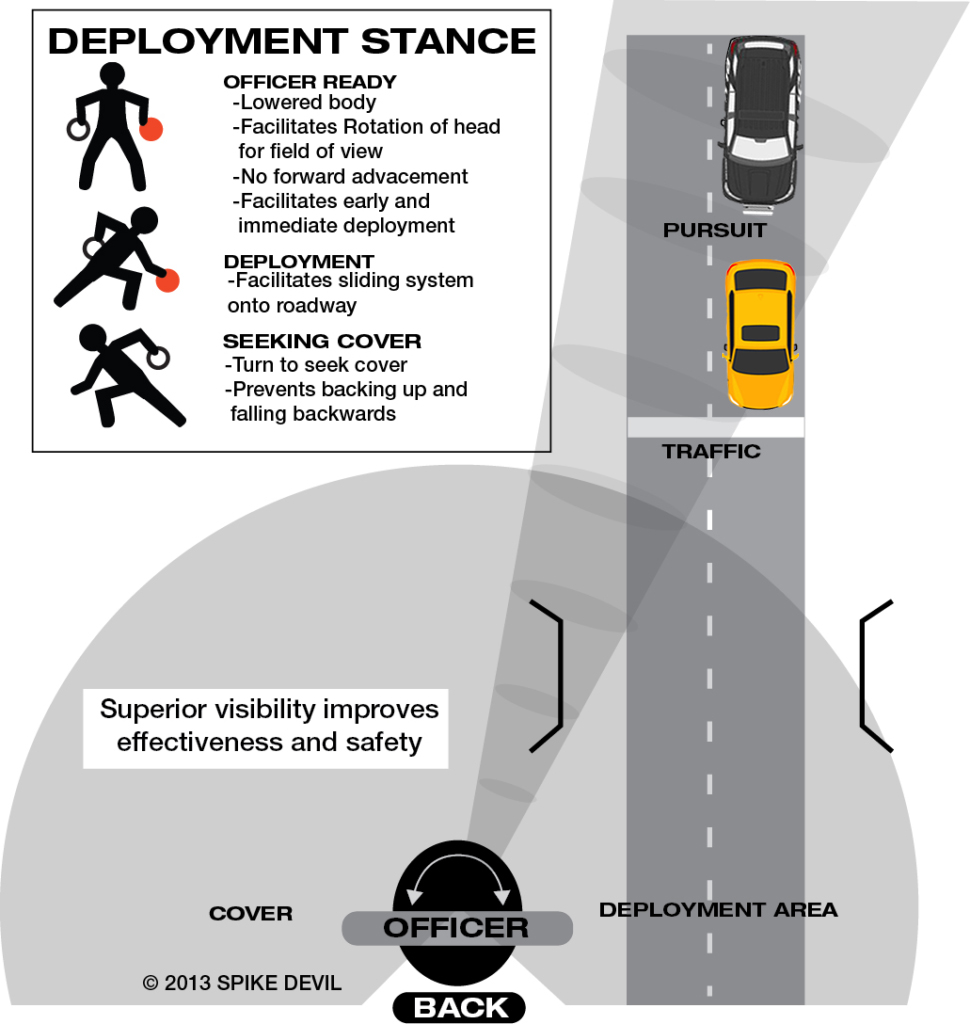Deployment scene awareness is important from the moment the system is unpacked and to the entire deployment process and recovery. This is a most important time to keep your guard up, and not doing so is what I call High Risk #1. A special Stance provides superior results and keeps you safe.
Stance
The stance places the officers body in a position where he can collect all the important data for deployment or to seek cover. The stance can be used in both the pre-deployment method and also in the curb side deployment method.

Body Orientation and Visibility
The stance places your body in an orientation where it can see three important areas. 1) Facing traffic, target and pursuit vehicles. 2) the deployment area to one side and 3) the path to cover to the other side.
Body Orientation and Repositioning of Body
The stance is designed to plant your body low and prevent forward movement and allow for rotation of your torso and hips for backward movement. Backward movement might be deploying a pre-deployed system or it might be seeking cover. When used to deploy it serves as a way of counting your steps to accurately position the system in the traffic lanes. (very useful at night) When used to seek cover it prevents the officer from backing up and tripping over something.

The stance is very easy to do and its benefits are much more complicated to explain than to do. During training it comes natural and the officers see all the benefits come together as he scans from traffic.. to spikes ..to cover.
Being in the ready position facilitates a quick deployment from the cover position to the recovery of the spikes. Officers are more confident as they experience the stances and see it all come together.
1.What are the three important areas an officer can look at when adopting the deployment stance.
A. Traffic – Spike system, escape for cover
B. Facing Traffic, the officer is more likey to early spot the target vehicle.
C. The officer being able to see the Spikes can deploy at first chance, position the spikes, the recover the Spikes.
D. The officer can rotate his head and look behind him and seek best cover if rquired.
E. Being positioned to look around is not important, just deploy the spikes.
.
2.How does the stance improve effectiveness?
A. The deployment officer watches approaching traffic and is more effective at deployment and recovery of the Auto Spike.
B. The officer can better position the Auto-Spike on the roadway, the stance keeps the officer low and harder to see by the target.
C. The Auto-spike slides across the surface, low hard to see, and the cord is low to not snag a bumper, and be pulled down the road.
D. The System can be recovered quickly, because the Stance helps keep slack out of the line, for a quick removal by a quick tug of the system.
.
3.When the Auto Spike system can be deployed?
A. When the last car clears
B.
